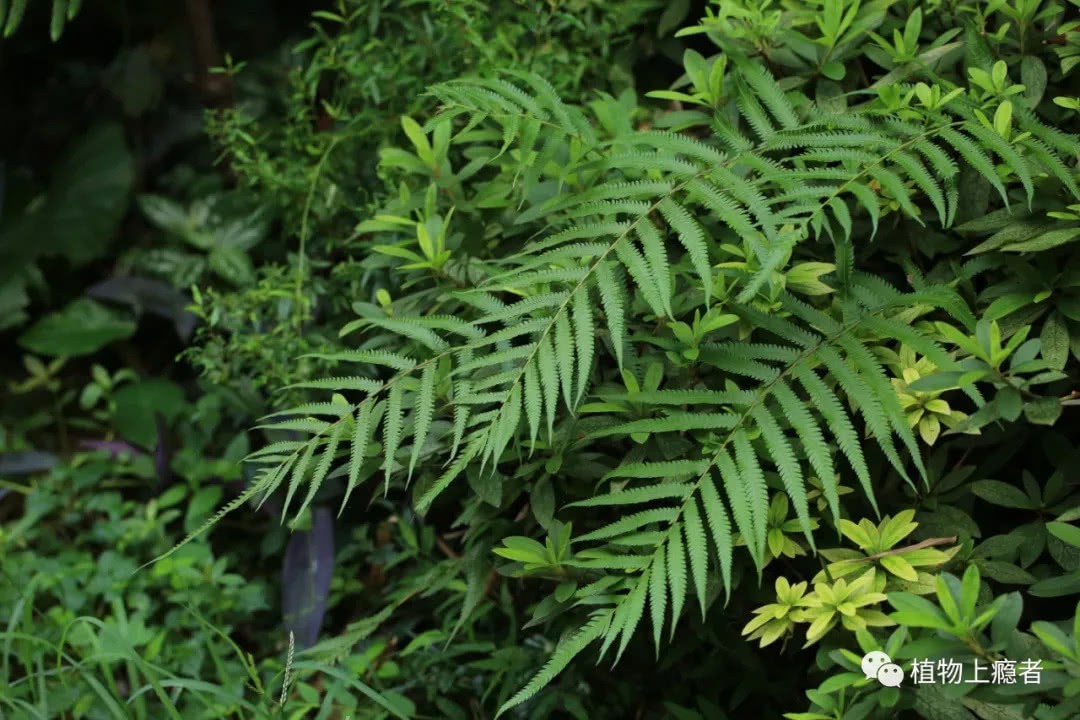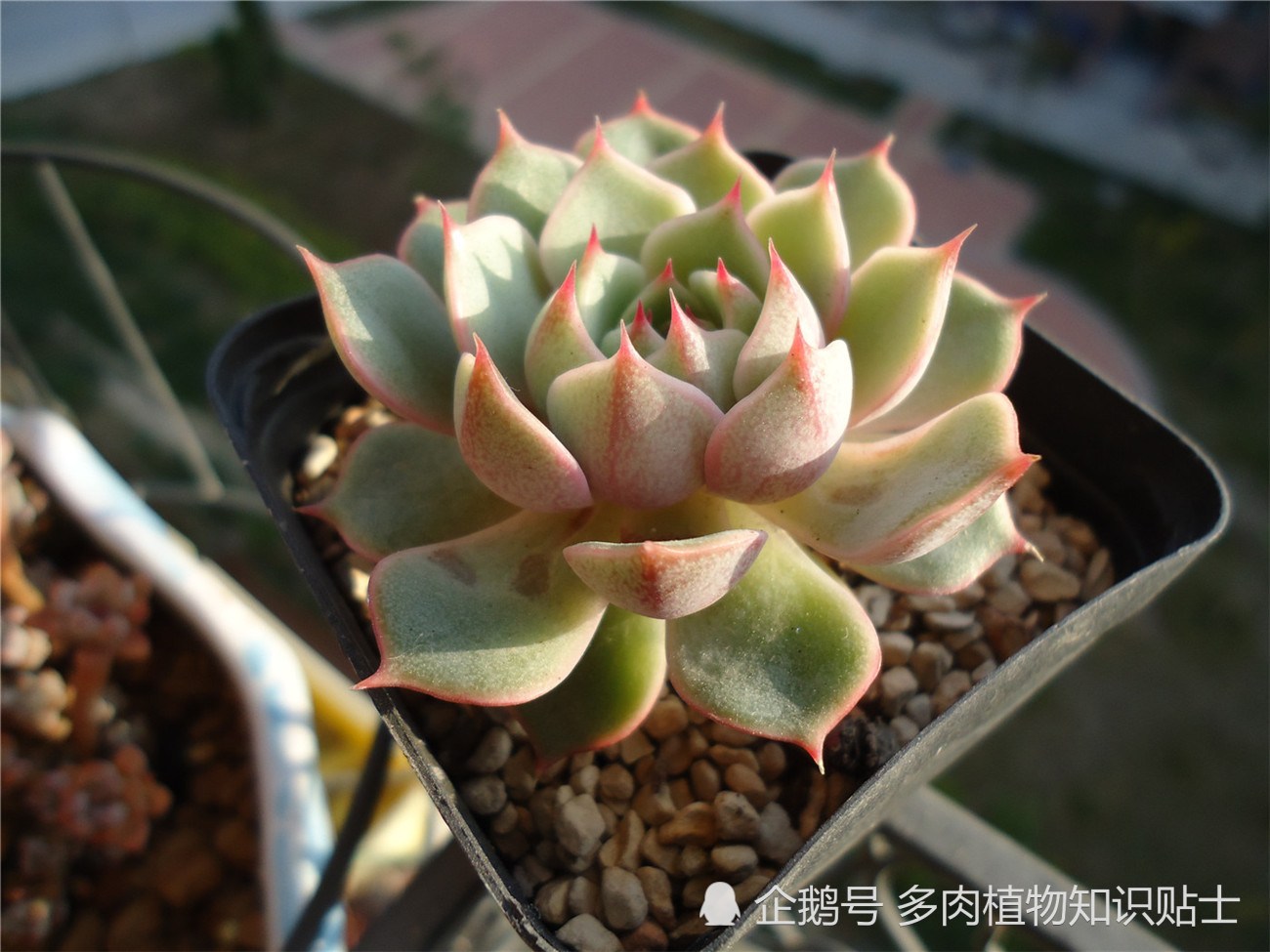Master Wang Yangming is bamboo and I am you.

The Beautiful Fern Lun
06
Dryopteris acuminata
Cyclosorus acuminatus
Alias: grate Shujin grass, Niu Riba
Dryopteris of Pteridaceae
Medium-sized terrestrial undergrowth plants
one
Go in with a smile and come out crying
When he was infatuated with the fern, the fern friend said, "be careful, the fern pit is very deep. You usually go in with a smile and come out crying." The first fern that made me want to cry was Dryopteris acuminate.
It's so common. We met everywhere in the grass, under the big trees and in the cracks in the roadside stones. Moreover, the body is tall, half a person tall, can not be ignored. But for me, who had just entered the fern gate, I was completely confused. Who is his last name and whose child is it?
I see the face every day, but I can't name it. This feeling is extremely depressing.
Leaves bipinnatifid; pinnae 13-18 pairs
Lobes numerous, arranged in the shape of grate teeth
The edges of the feathers are arranged unusually neatly, like fine brushwork, more than fine, a little too smart. This is my first impression. Turn the pinnae over, and the spores are arranged meticulously and neatly, yellowish when immature and brown after maturity.
Spores
With this understanding, in the stupidest way to come up with a plant map, the closest is the genus Dryopteris of the Pteridaceae. The leaf blade is bipinnately divided, and the basal pair of lobes is often longer, which is also consistent with the characteristic of Dryopteris.
The upper basal lobe is longer.
two
Book of Heaven
There are more than 100 species in the broad sense and more than 40 species in the narrow sense of the genus Dryopteris. "most of the lobes are arranged in the shape of grate teeth" is a sign of this genus.
Alias grate Shujin grass, beef rib, like?
The description and key to the genus Dryopteris looks like a heavenly book. Knowing that I didn't have the ability to decipher it, I simply asked two fern friends for advice. They all give the same answer: Dryopteris acuminate.
Young leaf fist roll
The leaf apex is caudate-acuminate, hence the name
Take this name and compare it directly with the description in the flora, one by one, until the following paragraph stands in front of me:
"the basal pair of lateral veins originates from the base of the main vein, and the apex forms an obtusely triangular mesh. The extroverted venule extends from the node to the hyaline membranous plasmoplasmic line under the defect. The second pair and the superior one pair of the third pair extend to the hyaline membranous plasmoplasmic line. Under the abscission, there are 21 pairs."
In the search table, the core feature of the species is also this paragraph.
I don't know what to say. This is simply a coded message. When Guo Jing and Guo Jiuxia first saw the Jiuyin True Sutra, it was probably similar to my mood at the moment-- I didn't understand a word.
Just put it down. Maybe I'll deal with it when I have more experience.
three
The master is bamboo, and mine is hairy fern.
I'm still not reconciled to it after all. In the following days, I played with other plants, but I still had this fern in my heart. Every time I pulled one or two acuminate ferns home, and looked at it with a magnifying glass. Haha, is this the "knowledge of things" advocated by Wang Yangming, a master of legend-centered learning? It's just that the master is bamboo and mine is hairy fern.
After watching more, suddenly one day, a long and obliquely flat triangle pattern suddenly emerged clearly from the hand-held magnifying glass. What? After the surprise, quickly turn up the description of the flora and look at it word by word:
"with the feather axis as the bottom edge, the tips of a pair of lateral veins between the adjacent lobes intersect each other into a blunt or pointed triangular mesh"-- exactly the same!
The triangular mesh is the first to be deciphered.
This discovery has greatly increased my confidence. Keep trying, let's take a look at the next password:
"and a long or short amateur vein protrudes from the self-junction, which is connected with the transparent membrane plasmoplasmic line under the engraving."
I can't see it clearly from a macro, and the hand-drawn sign is as follows:
four
Yingying between a feather, the pulse hidden secret language
The cipher message of Dryopteris acuminate leaves the last sentence:
"the superior 1 vein of the second and third pairs extends to the hyaline membrane plasmoplasmic line, and there are 2 and 1 pairs of lateral veins under the gap between the adjacent lobes."
Understand this sentence in the same old way: read it over and over again. Guo Jing practiced kung fu in the same way. The master taught him to practice again and again for a hundred times if he didn't understand it. One day, "his meaning will manifest itself."
I do not know how many times to see, suddenly blessed to the soul, suddenly understand the meaning of the "upper side of the third pair of pulse" that has puzzled me for several days. Look at the following picture:
On the contrary, let's sum up:
The sensitive points of the genus Dryopteris are these points in the code. The connection of leaf veins is the core point of species determination, the presence or absence of amateur veinlets and the logarithm of lateral veins combine a variety of different ferns. As the saying goes: Yingying between a feather, pulse hidden secret language. With the Dryopteris acuminate at the bottom, it will be much easier to recognize it the next time you encounter another Dryopteris.
At this point, the truth was found, and the truth was finally verified. And I really want to reveal myself and celebrate my success in customs clearance.
Name release:
The generic name Cyclosorus of Dryopteris acuminate is composed of the Greek root cyklos round + sorus pile, which refers to the round sporangium group. The adjective acuminatus means "acuminate", which means that the tip of the leaf is acuminate and suddenly shrinks into a pinnate tail. The aliases Bizi Shujin grass and Niu Riba also vividly describe the characteristics of its leaves.
Distribution:
Chongqing, Sichuan, Yunnan, Guizhou, Hunan, Hubei, S Shaanxi, Zhejiang, Jiangsu, Jiangxi, Anhui, Fujian, Guangdong, Guangxi, Hainan, Taiwan, Shandong, Henan. It is also distributed in Japan, South Korea and the Philippines.
The article and plant pictures (except for the origin) are all original by the author.
Your retweet compliment is the greatest support for me.
Plant addict
WeChat account: plantfiend
Discover the unique beauty of each plant
- Prev

Hangtai Aquarium: how to establish a complete and stable fish culture nitrification system?
Everyone buys the newly bought fish tank excitedly fully equipped, adds the water, activates the motor, will ask, what to do next? Buy Fish believes that this is the quickest answer to flash into your head, but a week later, the fish are dead one by one.
- Next

It's officially over. The summer of raising succulent plants begins.
Thanks to the luanfeifei material, the sun is too strong, Jingtian moved in, the sun is too strong on the sunshade net, Jingtian moved in.
Related
- Wuhan Hospital Iron Tree Blooming Result Was Instantly Frightened by the Gardener Master
- Which variety of camellia is the most fragrant and best? Which one do you like best?
- What is the small blue coat, the breeding methods and matters needing attention of the succulent plant
- Dormancy time and maintenance management of succulent plants during dormancy
- Minas succulent how to raise, Minas succulent plant pictures
- What are the varieties of winter succulent plants
- How to raise succulent plants in twelve rolls? let's take a look at some experience of breeding twelve rolls.
- Attention should be paid to water control for succulent plants during dormant period (winter and summer)
- Watering experience of twelve rolls of succulent plants
- Techniques for fertilizing succulent plants. An article will let you know how to fertilize succulent plants.

